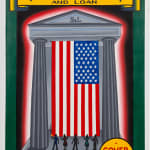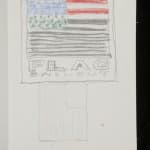Roger Brown
182.9 x 121.9 x 5.1 cm
Further images
-
(View a larger image of thumbnail 1
)

-
(View a larger image of thumbnail 2
)

-
(View a larger image of thumbnail 3
)

-
(View a larger image of thumbnail 4
)

-
(View a larger image of thumbnail 5
)

-
(View a larger image of thumbnail 6
)

-
(View a larger image of thumbnail 7
)

-
(View a larger image of thumbnail 8
)

-
(View a larger image of thumbnail 9
)

-
(View a larger image of thumbnail 10
)

Commonly dubbed the S&L crisis, the situation involved the failure of 1,043 out of the 3,234 savings and loan associations (S&Ls) in the United States. An S&L or "thrift" is a financial institution that accepts savings deposits and makes mortgage, car and other personal loans to individual members. The Federal Savings and Loan Insurance Corporation (FSLIC) closed or otherwise resolved 296 institutions from 1986 to 1989, whereupon the newly established Resolution Trust Corporation (RTC) took up these responsibilities. The RTC closed or otherwise resolved 747 institutions from 1989 to 1995 with an estimated book value between $402 and $407 billion. In 1996, the General Accounting Office (GAO) estimated the total cost to be $160 billion, including $132.1 billion taken from taxpayers.
Brown’s painting reflects an actual incident that stemmed from the crises: a flag-burning in 1990 as a protest against the lack of government transparency. This act turned into a major national conversation about the legality of burning an American flag as an expression of free speech. Congressional meetings about the issue were criticized by the Orlando Sentinel, among other papers, as being a "smokescreen" to distract from the actual purpose of the conversation: the financial crisis being protested.









